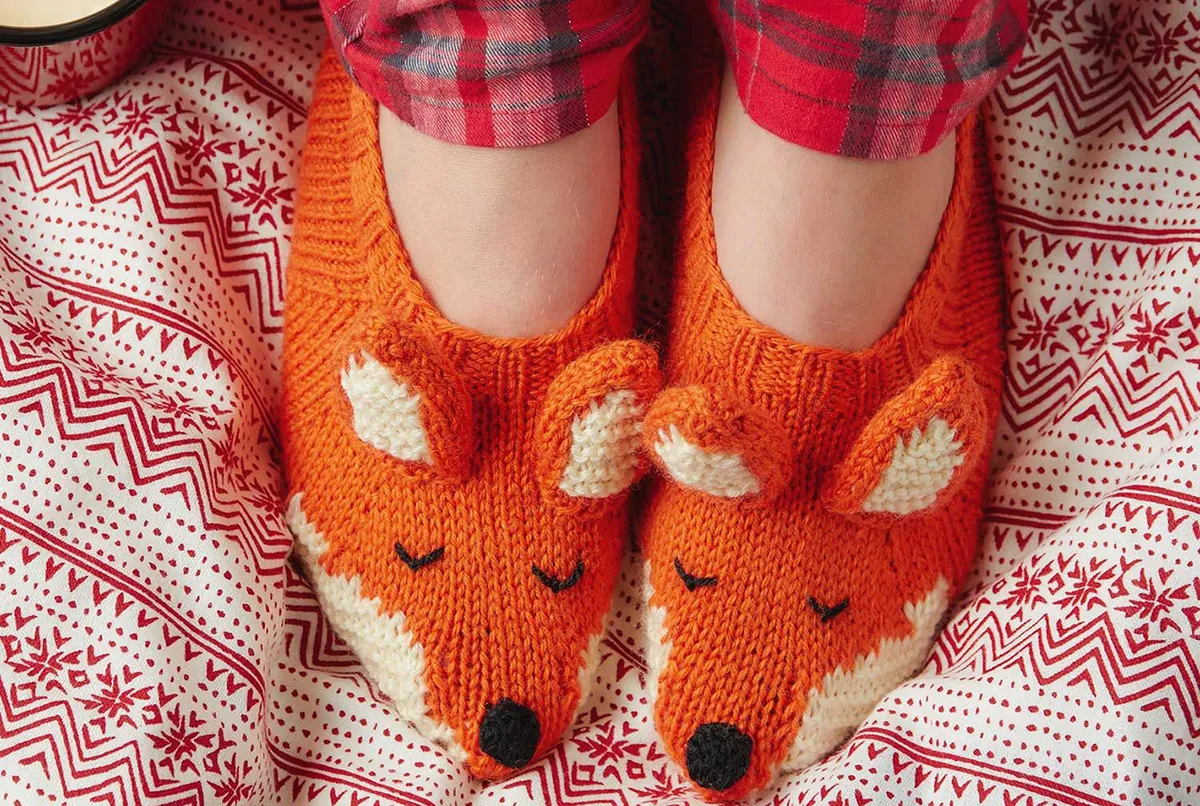Knitting starter kits: everything you need to start knitting in 2025
Not sure what you need to take up knitting? Don't worry – we're here to help! In this guide we'll cover all the basic equipment you'll find in a knitting starter kit, plus a few extra tools that are useful to keep in your project bag.
We'll also recommend some knitting kits for beginners, featuring everything you need to complete your first project. Here's what you'll find below:
- What do I need to start knitting?
- 9 of the best knitting starter kits for beginners
- Other useful knitting tools
If you are looking for more ideas and to be inspired on the knitter starter kit to invest in, take a look at our essential knitting tools article.
What do I need to start knitting?
You don't need much to start knitting! In fact, a basic knitting kit for beginners includes just three things:
1. Knitting needles
The first, and most important, thing you need in your knitting starter kit is some needles! There are so many different kinds to choose from that it can be difficult to know which ones to pick, which is why we recommend trying out a few different types to see what works best for you.
Here are some examples, or see our best knitting needles article for more ideas.
Straight needles are the best knitting needles to use when you're first learning to knit. These come in pairs, with a needle head at one end to stop the stitches falling off, and they enable you to knit flat fabrics.
The main categories are wood, metal and plastic, and they all have their pros and cons.
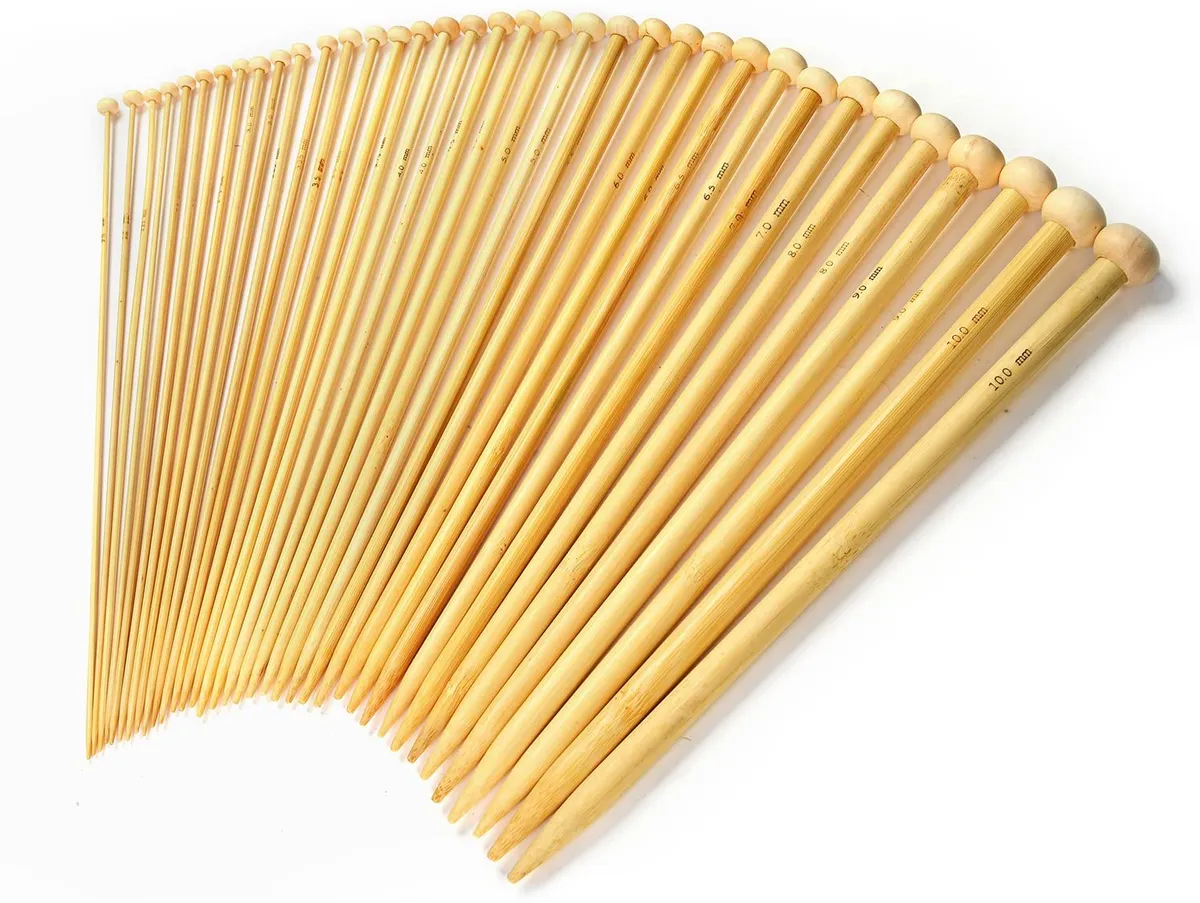
Wooden or bamboo needles can be easier for beginner knitters as they aren't as slippery as metal ones, so your stitches are less likely to slide off the end.
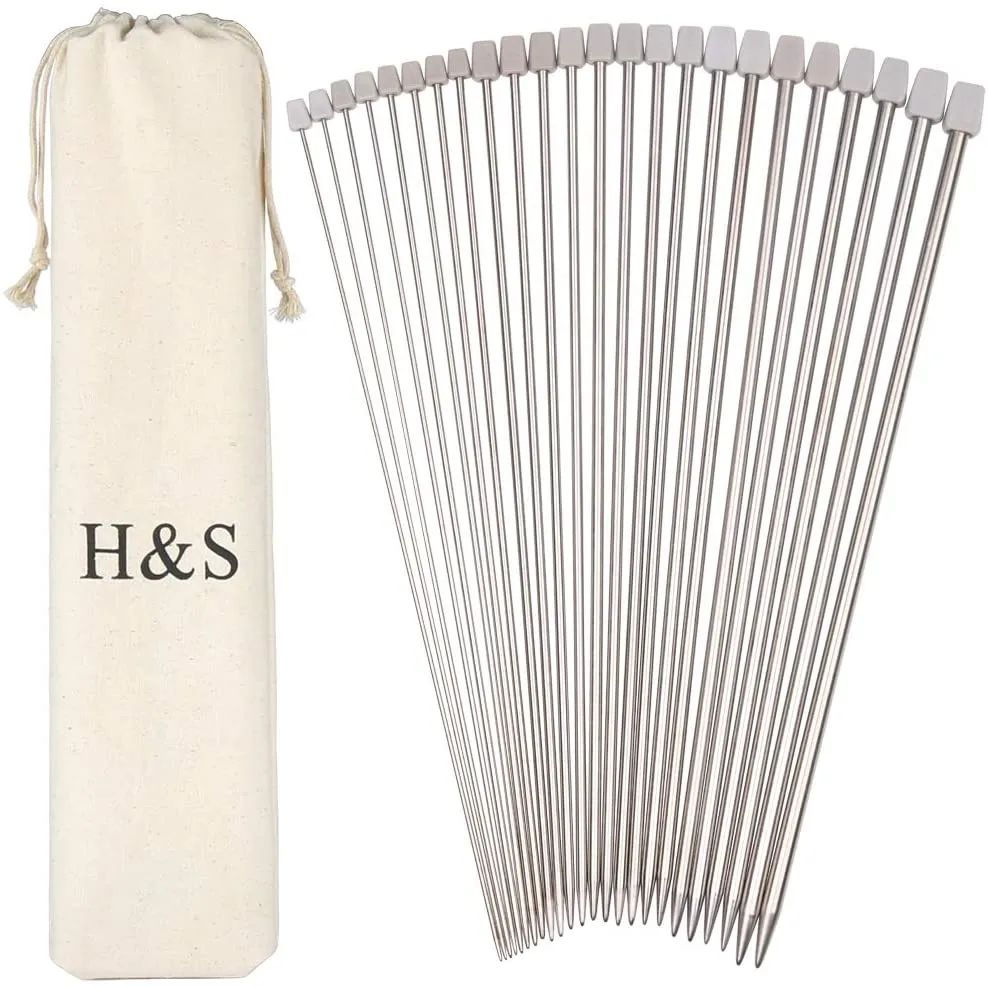
More experienced knitters may prefer metal needles as they allow them to knit faster, especially with grippy wool and acrylic yarns.
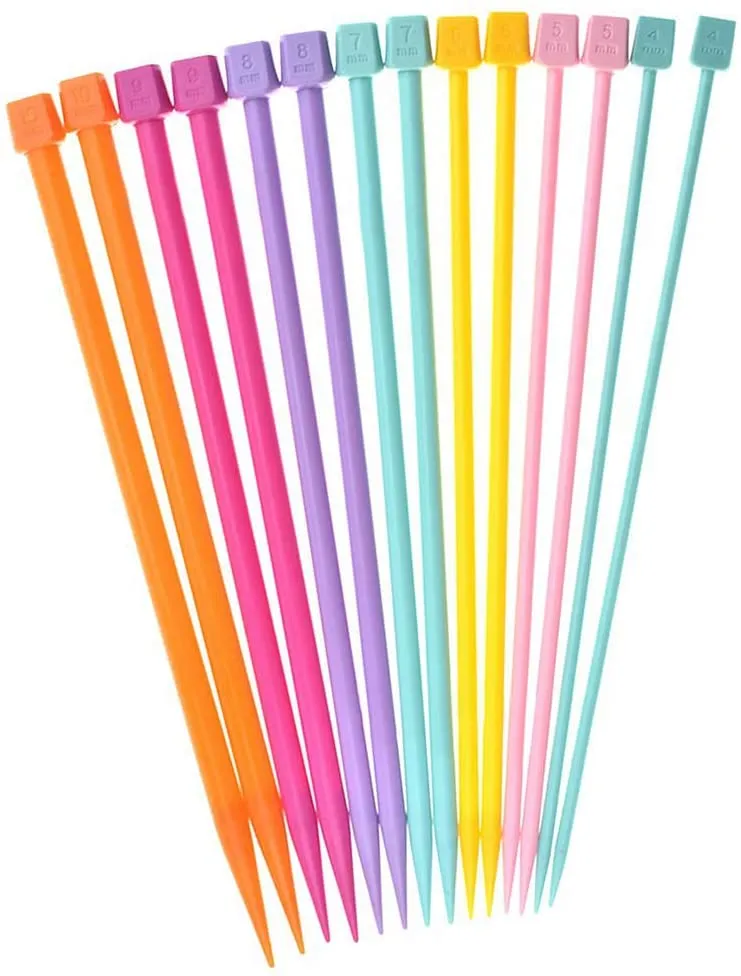
Plastic needles tend to be inexpensive, and their light weight makes them a good choice for super-chunky yarns where heavier needles could put strain on your wrists.
They are often attractively coloured and the different colours can make it easier for knitters to visually identify the different sizes in an instant.
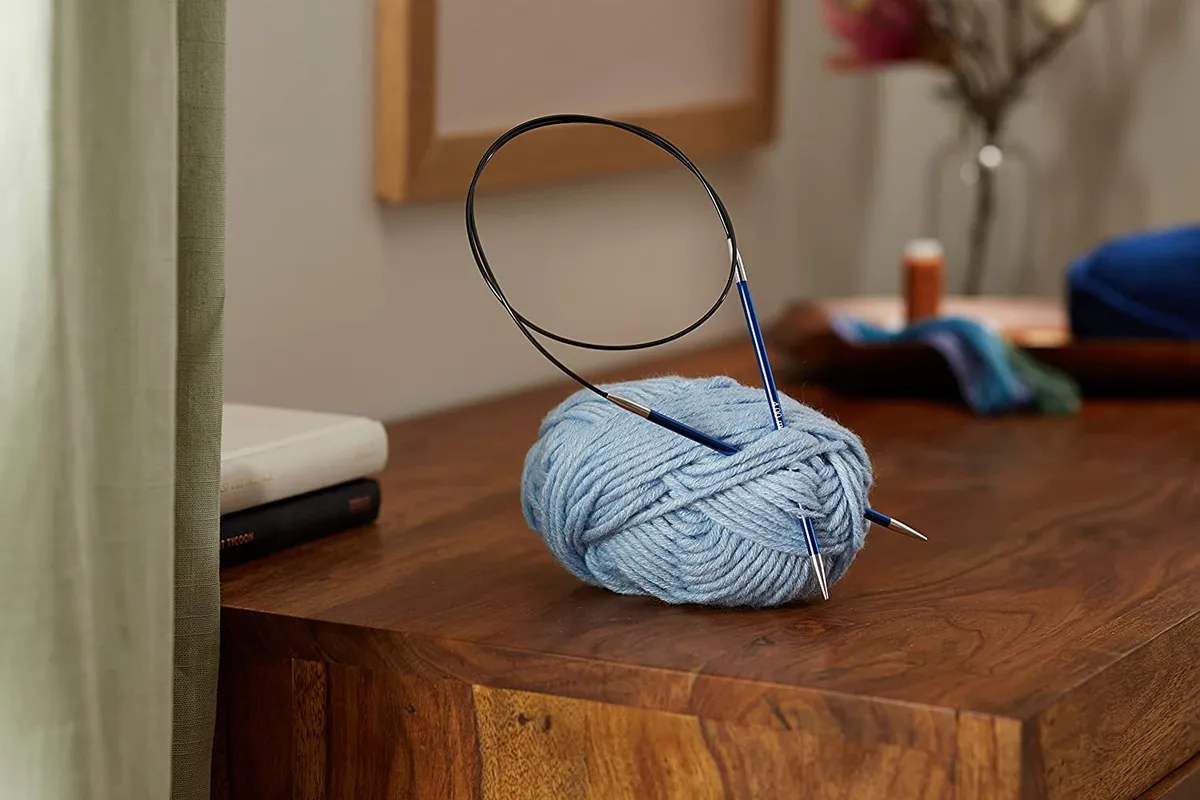
It's also possible to create flat knitting on circular needles, just as you would on straight needles, with the long bendy cable attached between the two needles taking the weight of the fabric.
This is a good option for bigger projects such as blankets. Some circular needles are interchangeable, meaning you can buy the cables and needle tips separately and mix and match them to create the needle you need.
However, we wouldn't recommend these for a knitting beginner's kit until you have got used to using a circular needle. But if you want to check these out, take a look at our best interchangeable knitting needles article.
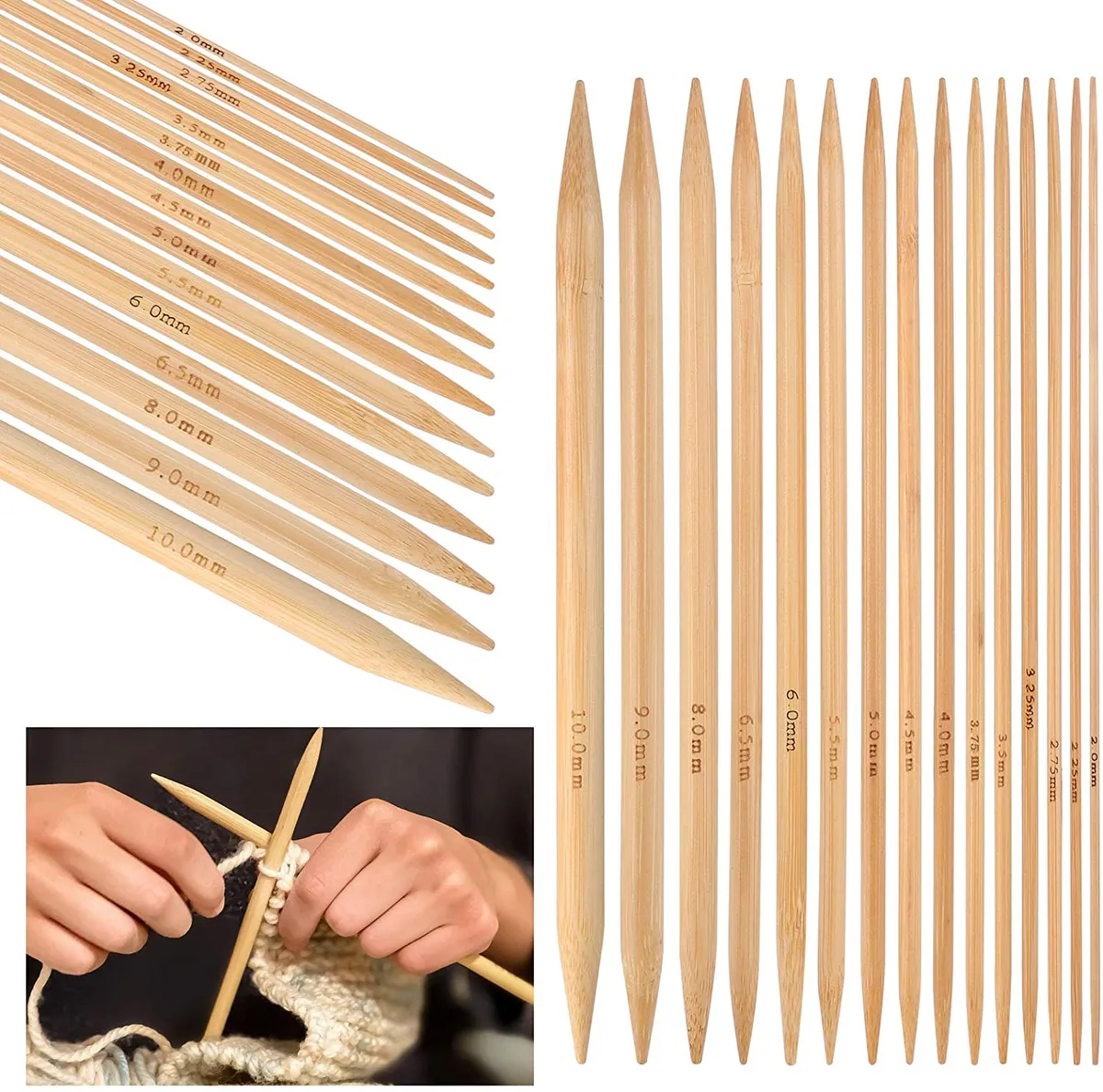
Take the step up to tubular knitting 'in the round' and you'll need those circular needles again – or a set of double-pointed needles (DPNs). These come in packs of four or five and have a point at each end, as their name suggests.
Take a look at our guide to which needles should I use to knit in the round for more on choosing the right tools for tubular knitting.
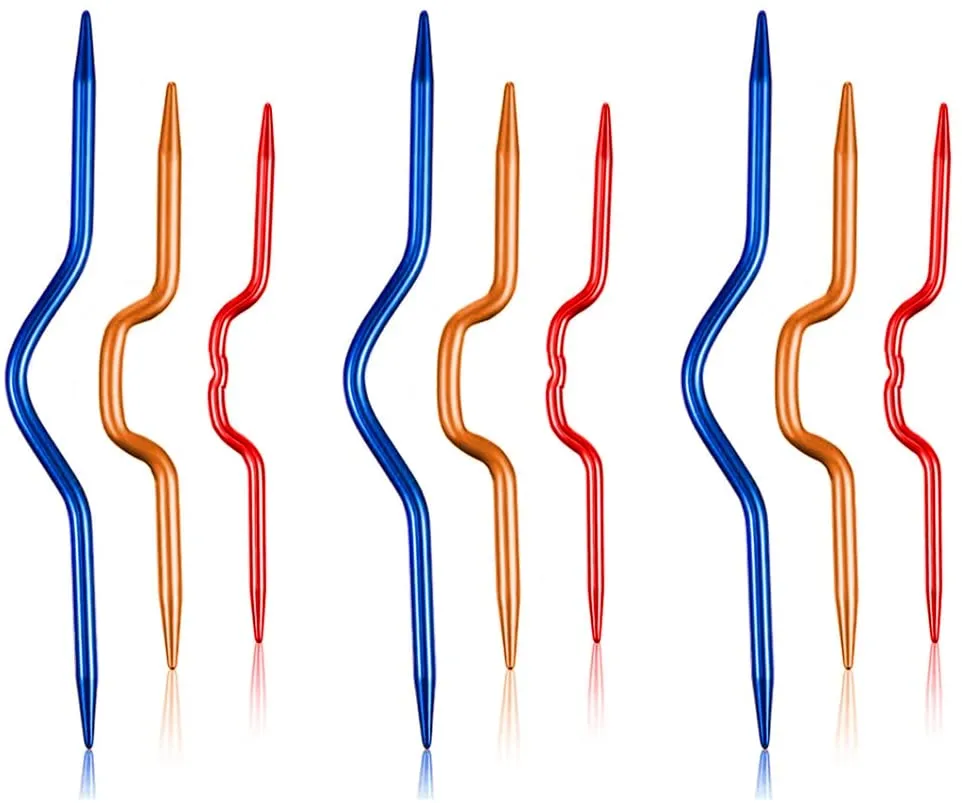
The final type of needle is the cable needle. These can confuse beginner knitters because there is not actually any cable on them, while a circular needle has a plastic cable between the two knitting needles. But a cable needle is called a cable needle because it makes cable knitting much more straightforward.
This has a kink in the middle and is used for holding a small number of stitches at a time when you're creating cables. Some knitters use a spare needle instead – or even cable without a cable needle entirely!
For more about needles, check out our guide on how to choose the right knitting needles and our round-up of the best knitting needles. Or if you fancy knitting needle-free, check out out How to do finger knitting guide!
2. Yarn
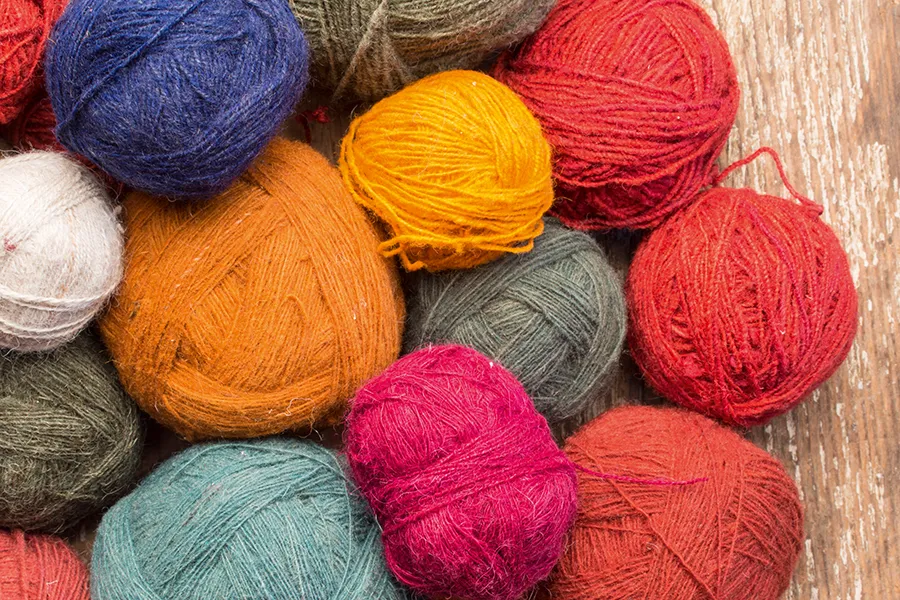
Talk to any knitter and you'll soon realise that one of the joys of the craft is just how much yarn there is to choose from. But all those different fibres, textures, thicknesses and colours can make picking the right yarn for your first stitches a bit daunting for a beginner.
For this reason we suggest that you start with a wool or acrylic yarn in DK or aran weight. These fibres have a bit of natural stretch, so they're easy to use, plus they can easily be ripped back and re-knitted when you make a mistake without damaging the yarn.
They're also good value, so you don't have to worry about wasting money (and yarn) if your first project doesn't turn out quite as you intended. Check out our best acrylic yarn article for our current favourites to buys.
Fluffy fibres such as mohair, novelty yarns including fun fur, and slubby, tufty or feather yarns are best avoided by beginners as they can make it hard to see your stitches. It's also best to avoid very fine or very thick yarns as these tend to be harder to work with.
For more on yarn weights see our yarn weight conversion chart and beginner's guide. And when you are ready to take on those fluffy yarns, check out our best eyelash yarn and best novelty yarn articles to cast on a riot of novelty fibres.
Wondering why we keep calling it 'yarn', rather than 'wool'? In knitting terms 'wool' is specifically the fibre spun from a sheep's fleece, while 'yarn' refers to all the different types of yarn, including wool!
3. Scissors
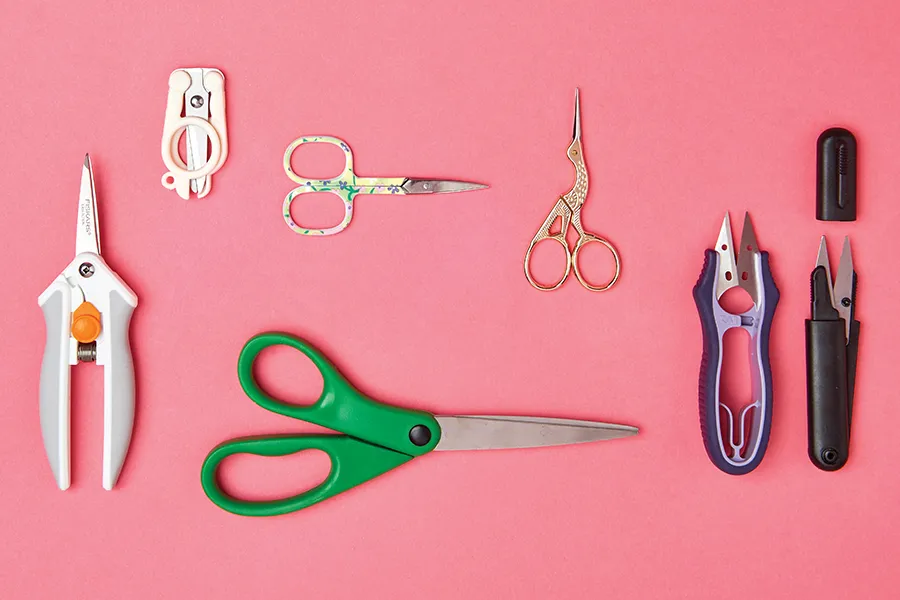
Whatever you’re making, a sharp pair of scissors is a knitting starter kit essential. You'll need them for cutting off the yarn when you finish a project, trimming ends you've woven in, and more.
Of course, any scissors you have around the house will do the job, but a pair specifically for crafting will give you the best results – you don't want to be sawing away at your beautiful yarn with a pair of blunt kids' scissors!
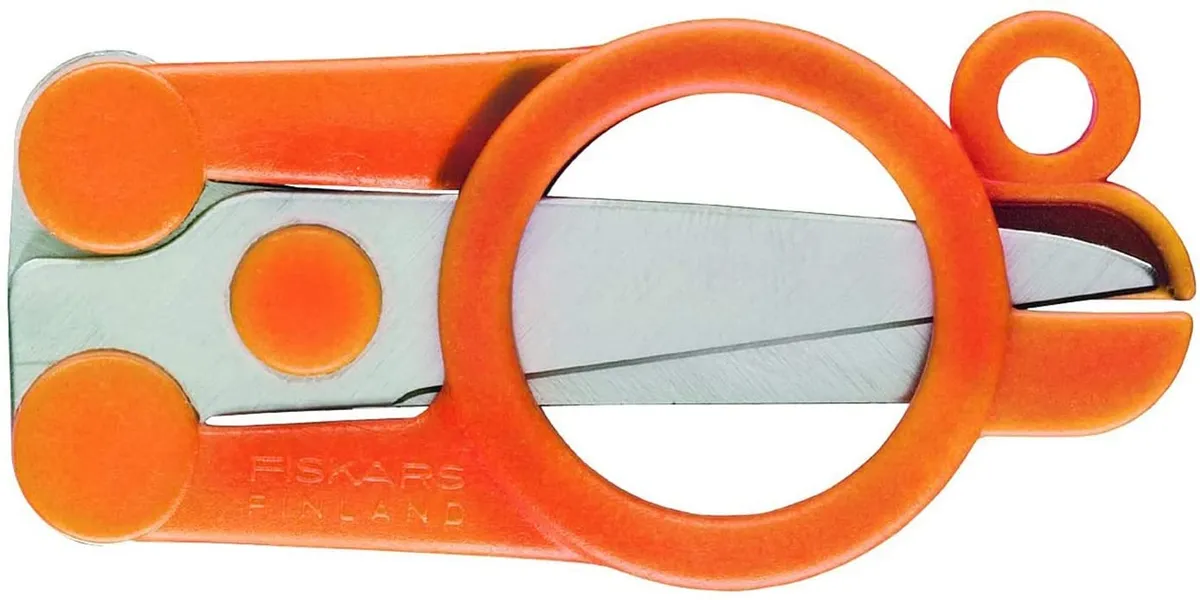
If you’re out and about opt for a dinky pair that folds up or comes with its own travel case.
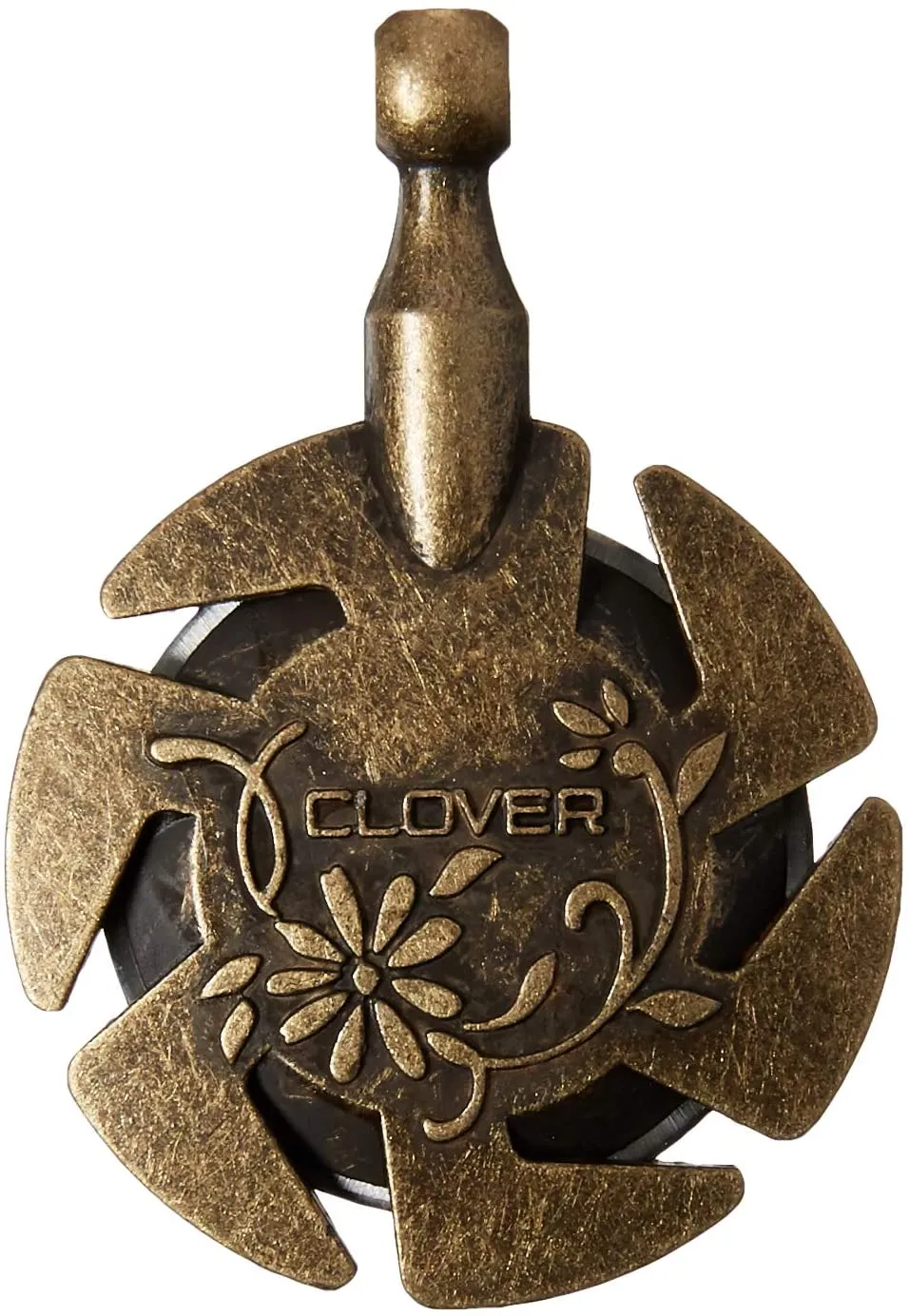
Alternatively, leave the scissors at home and invest in a knitter's yarn cutter pendant that you can add to a keyring or wear as a necklace.
Beginner knitters start here!
We've got loads of guides to help you take your first steps in knitting. Get started with our complete guide to knitting for beginners. Learn how to cast on knitting, how to read knitting abbreviations, and all about yarn weights with our yarn weight conversion chart. Then start your first project with our beginner knitting patterns!
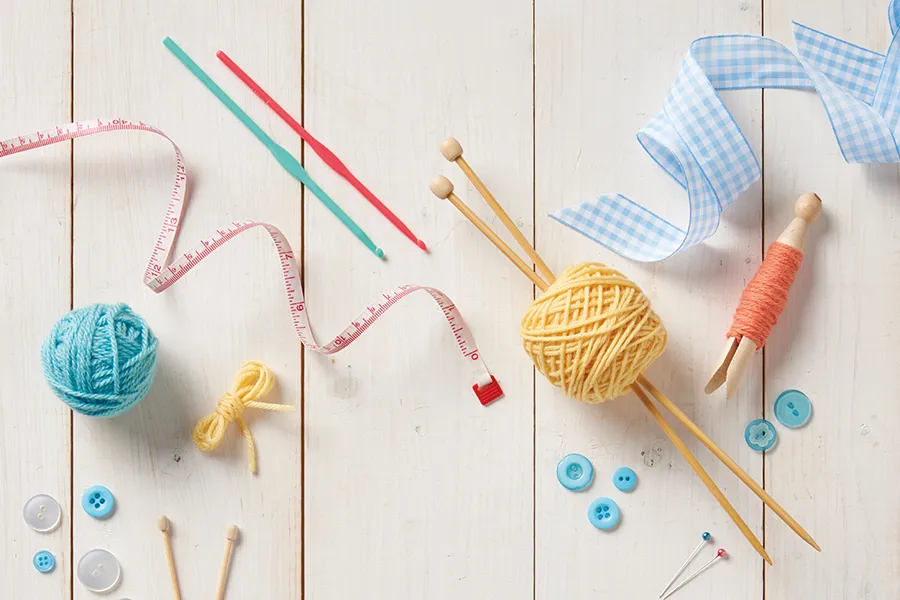
5 of the best knitting starter kits for beginners
There are some great knitting kits for beginners out there, making it easy to get everything you need for your first projects without having to buy all the bits and pieces individually.
If you're not yet confident about choosing the right yarn and needles to go with a particular pattern they're a great option, as it's all done for you.
You can buy kits for a whole range of abilities, from just-started to been-knitting-for-decades, but here we've focused on kits for new knitters. These typically feature DK or heavier yarn and simple stitch patterns such as garter stitch and stocking stitch.
If you want your first project to be something more on-trend than a Doctor Who scarf, we have lots of ideas for you!
Let's go shoppping…
1. We Are Knitters Snood and Headband knitting starter kit
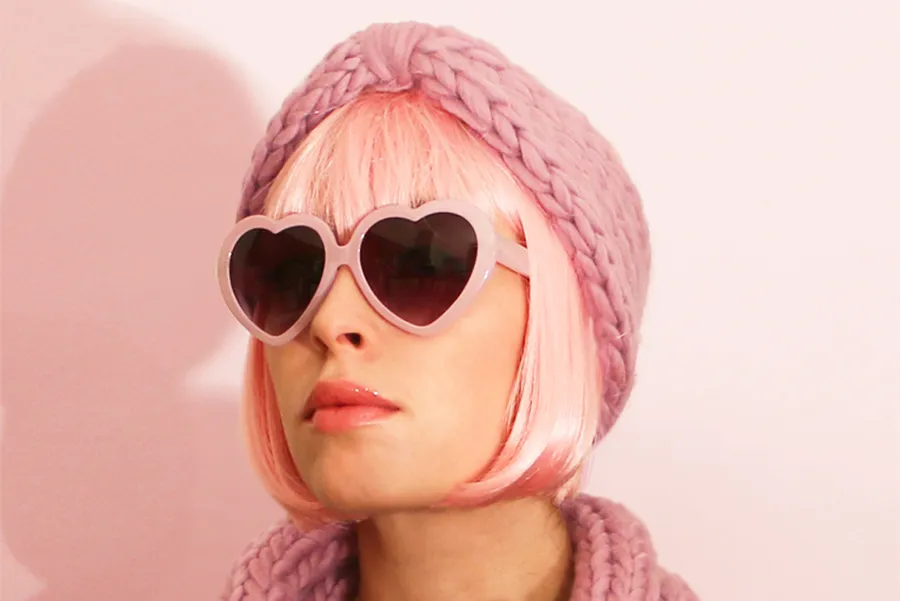
Knit yourself an on-trend snood and headband with this kit from We Are Knitters.
The knitting kit includes their super bulky The Wool yarn in your choice of colour, plus circular or straight needles (or none at all, if you already have some), and the pattern in a choice of five different languages.
2. Wool and the Gang Dreamin' Jumper knitting starter kit
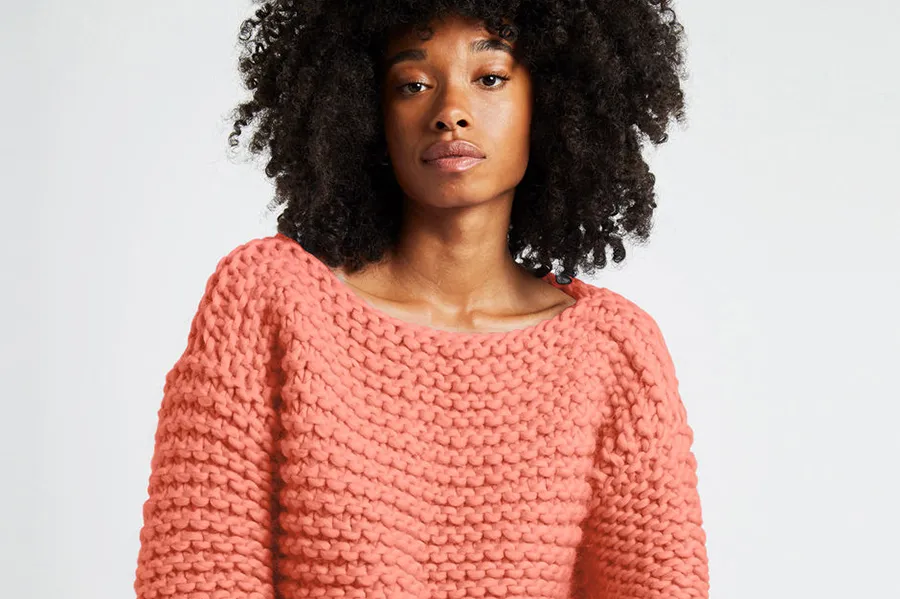
Yes, you can make a jumper as your first knitting project – and Wool and the Gang will show you how!
You'll learn all the stitches you need, plus how to sew invisible seams for a neat finish. It's made in their gorgeously cosy Crazy Sexy Wool.
3. Tribe Yarns Beginners Zero to Knit Kit
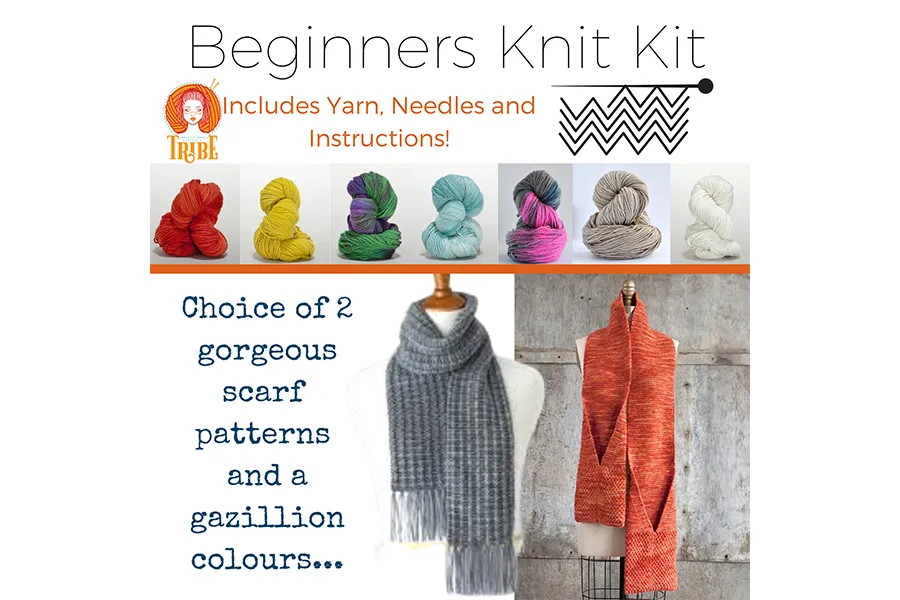
This knitting starter kit is perfect for complete novices. Tribe Yarns Zero to Knit kit includes four gorgeous yarns, circular needles, stitch markers, a tapestry needle and a host more useful pieces of kit.
4. Wool Couture knitting starter kit
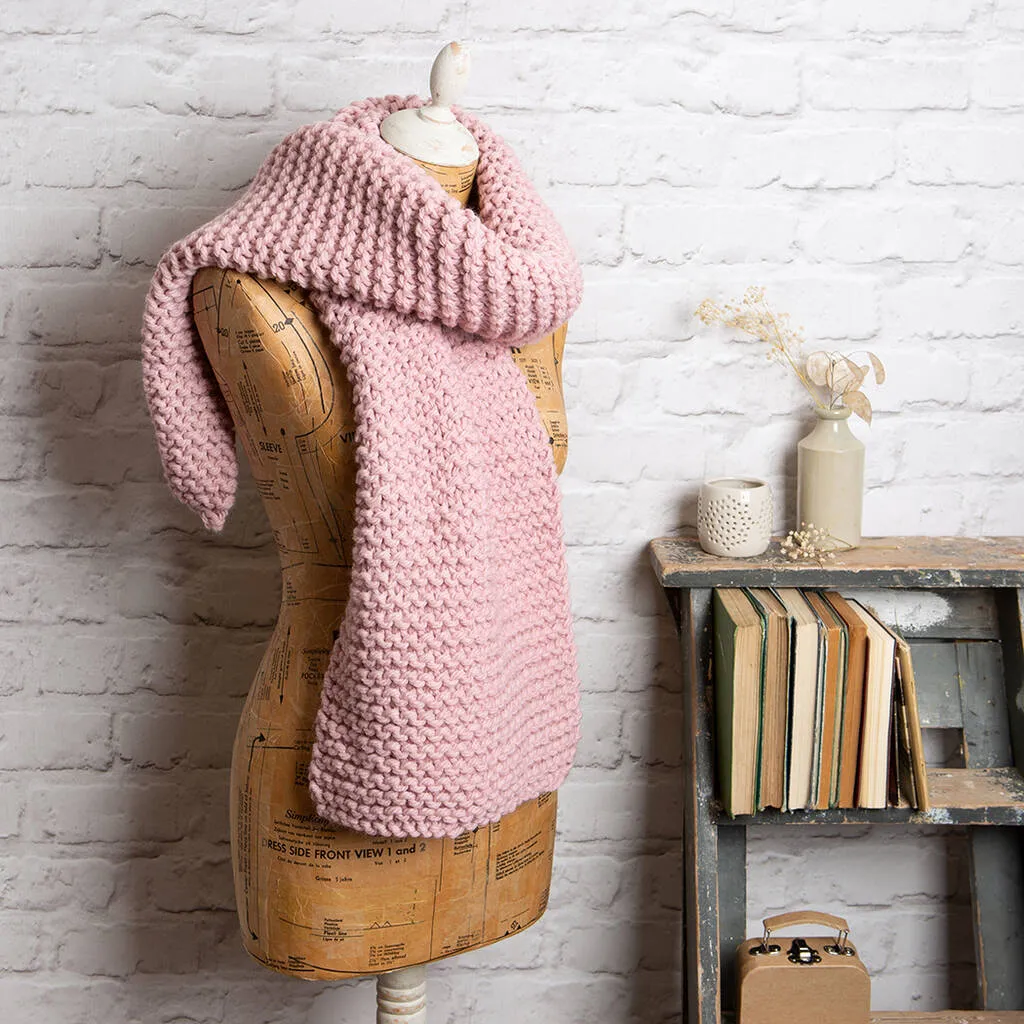
How gorgeous is this garter scarf? It's the perfect winter accessory and easy to make thanks to Wool Coutre's new knitting starter kit.
Inside the kit, you'll find the scarf pattern, 4 balls of yarn, a tapestry needle and an all-important How to Knit manual.
It's beginner-friendly and would make a lovely knitting gift for a friend or creative family member.
5. Blanket knitting starter kit for beginners
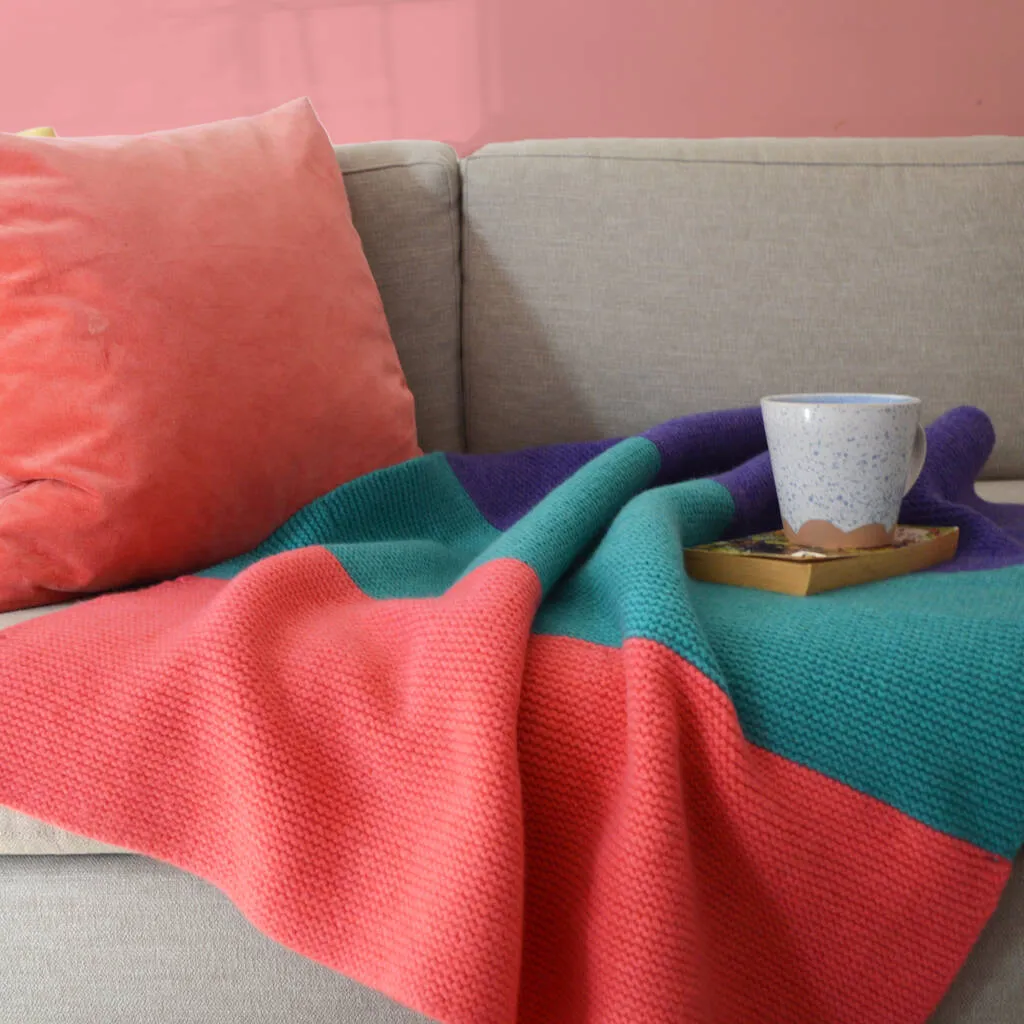
If you don't want to make a garment for your first knitting project then this is the starter kit for you!
Pro Yarn Studio's knitting starter kit includes everything you need to make this colourful blanket.
The block colours and simple shape make it a wonderful pattern to start with.
Bonus: Knitting starter kits for kids
And finally, some kits to get the kids (or big kids at heart) into knitting!
Galt First Knitting Kit
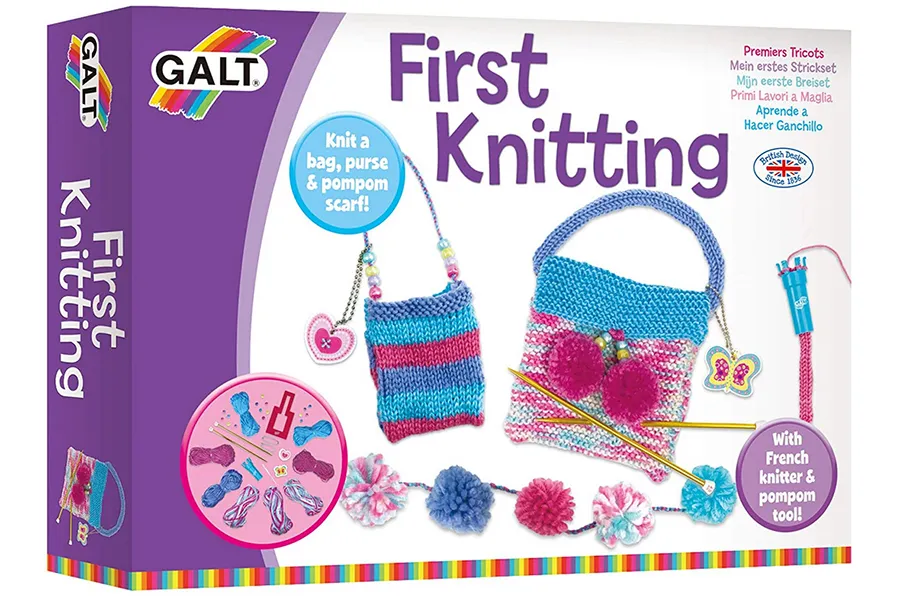
Yes, it's for children and no, we wouldn't judge you if you kept it for yourself!
Knit a bag, purse and pompom scarf with this learn-to-knit kit, which as well as yarn and needles also includes a French knitting doll and pompom maker.
Why not try out a knitting machine to help speed up the process?
Buttonbag Pompom Scarf Kit
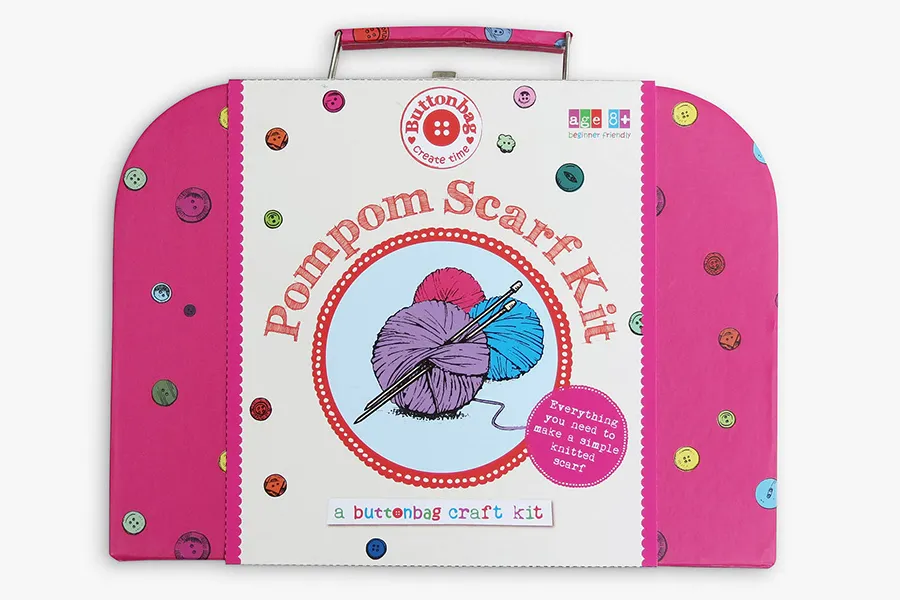
Packaged in an old-fashioned mini suitcase, this beginner knitting kit makes a great gift.
It contains all the yarn and tools you need to make a stripy pompom scarf in bright colours and is suitable for ages eight and up.
There are also cross stitch and sewing kits for kids in the same range.
Other useful knitting tools
Crochet hook
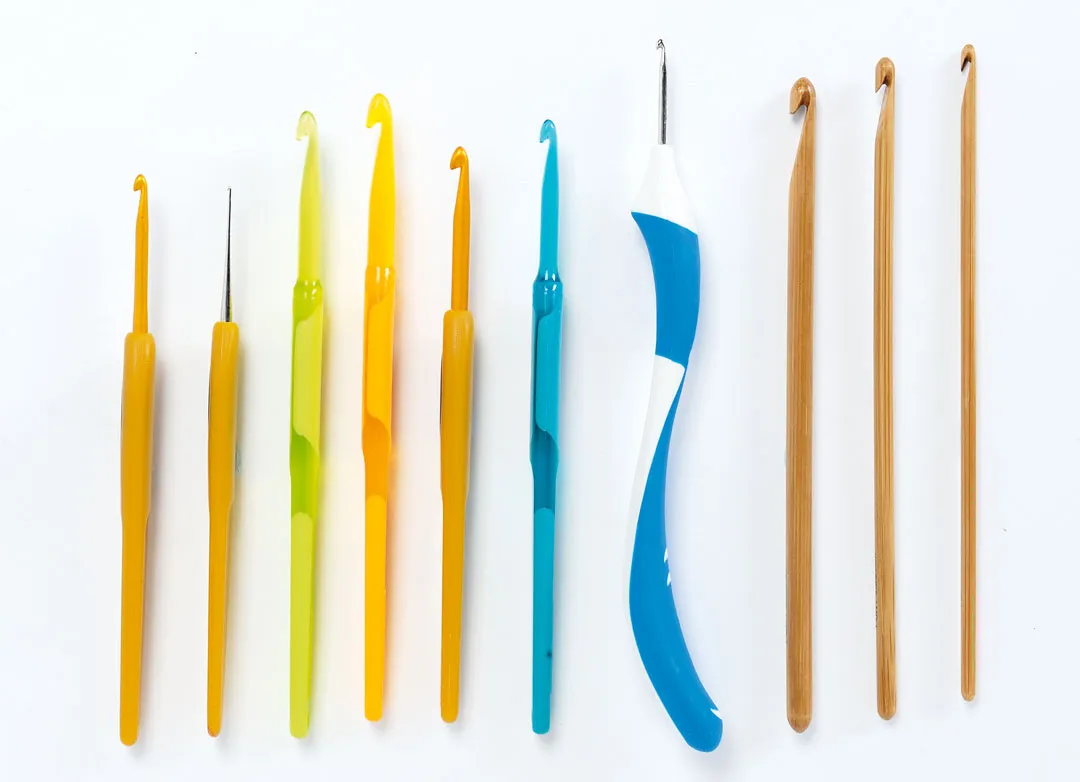
After your knitting needles and scissors, a crochet hook is your next best friend! Exactly the right shape for hooking dropped stitches and working them up the knit ladder, they are invaluable for all knitters. They can even be used to add hair to knitted toys.
Choose a hook that suits the weight of your knitting yarn for top results, and check out our guide to the best crochet hooks for advice on which ones to buy.
Tapestry needles
If you have stitches to seam, or ends to weave in, you need a tapestry needle. Bent tip needles help when working backstitch or mattress stitch, especially with aran yarn or thicker.
Stitch holders
Stitch holders are a must if you make garments, especially when working neck shaping, where you are setting some stitches aside at the centre front neck or back neck to work later.
They’re also useful for putting your underarm stitches on hold if you make seamless garments, ready to join later on with grafting.
Tape measure
Tape measures are an absolute knitting essential.
You’ve probably got one knocking around somewhere already but if not, look out for mini ones for knitting on the go and keep a traditional dressmaker’s 150cm tape measure at home for those bigger knitting projects.
A clear straight ruler is also useful.
Blocking wires, mats and tacks
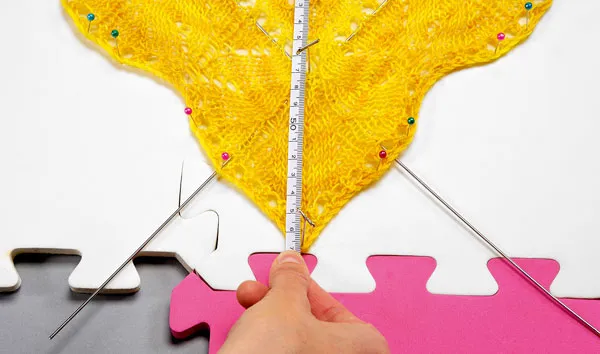
There’s nothing wrong with pinning out your knitting to block it, or stretching it on a towel, but for a sturdier system, try threading blocking wires through your fabric pieces.
You’ll get a neater finish and if you use blocking mats your knitting will dry quicker too. See more blocking mats to buy in our best blocking boards for knitting and crochet article
Stitch markers
Stitch markers come in two forms: solid ring top and lockable. Use them to mark the beginning of your rounds, show where key shaping points are, separate pattern repeats or hold dropped stitches.
See our favourite (and cutest!) stitch markers in our best stitch markers round up.
Needle gauges
A needle gauge will enable you to check the exact size of your needles.
You may prefer to use one which shows both mm and US sizes as some patterns will give one size but not the other.
Get a gauge with a ruler running along one side – it’s super handy for checking your tension or gauge.
Wool wash
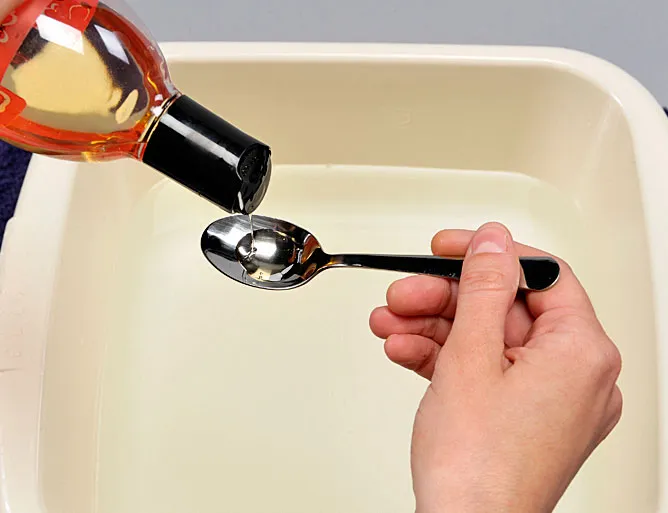
Today’s wool washes are incredible – they smell gorgeous, are super-gentle on your beloved creations and you don’t even have to rinse them out!
If you're going to be knitting a lot, or using yarns containing natural fibres, they're a worthwhile investment.
Check out our guide to essential knitting tools for more ideas on what to keep in your project bag, and find the best knitting books to help you improve your skills.
Start your knitting journey with these essential tools
Knitting starter kits are a great introduction to the world of knitting. They ensure you have all the tools you need to ake your first yarn creation!
Use our guide as a base for making your own beginner knitting kit and add extra tools, accessories and patterns as you progress.
Use your new starter knitting kit with these patterns
Now you have your knitting start kit ready you need some patterns to work on!
Head over to our free knitting patterns collection which features hundreds of beautiful projects.
